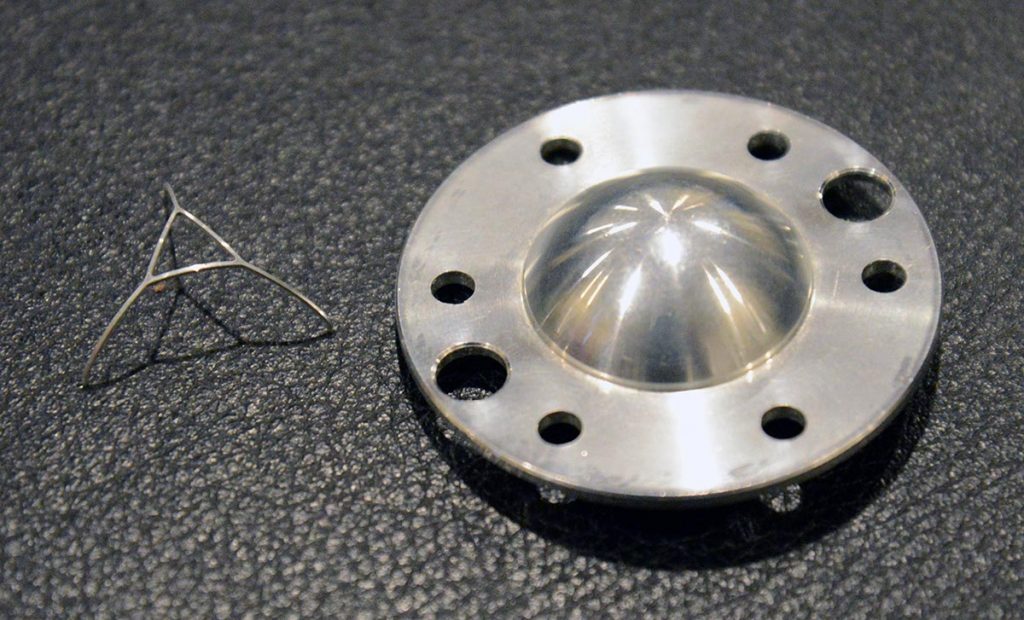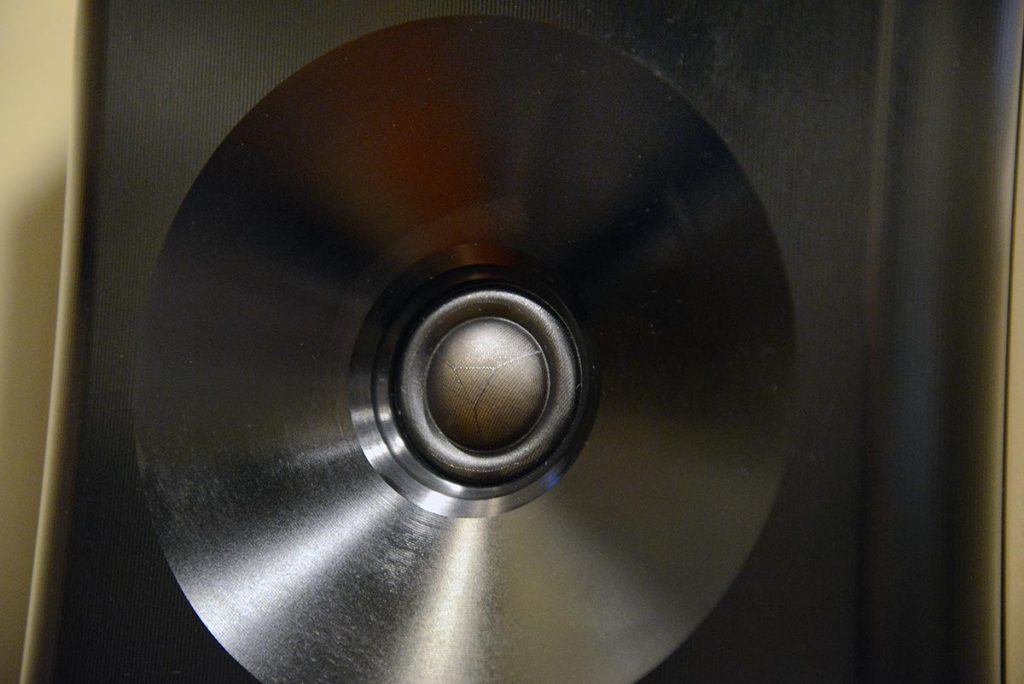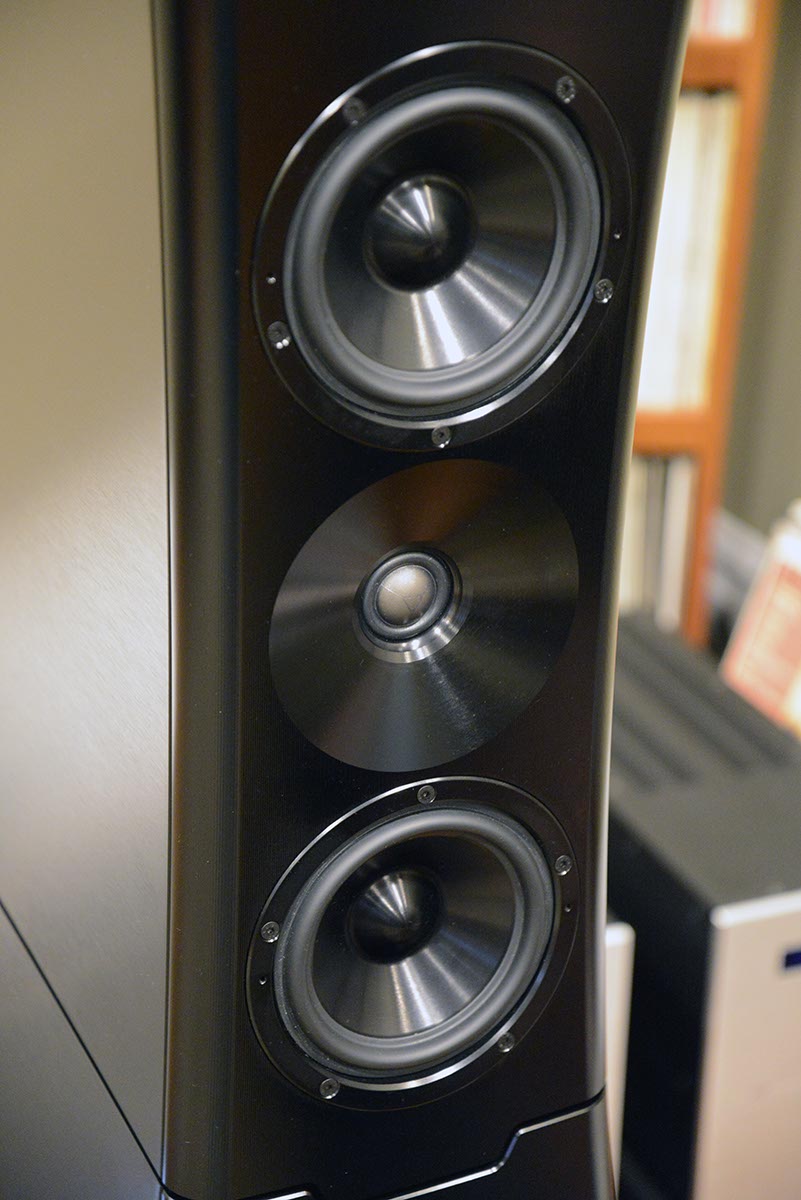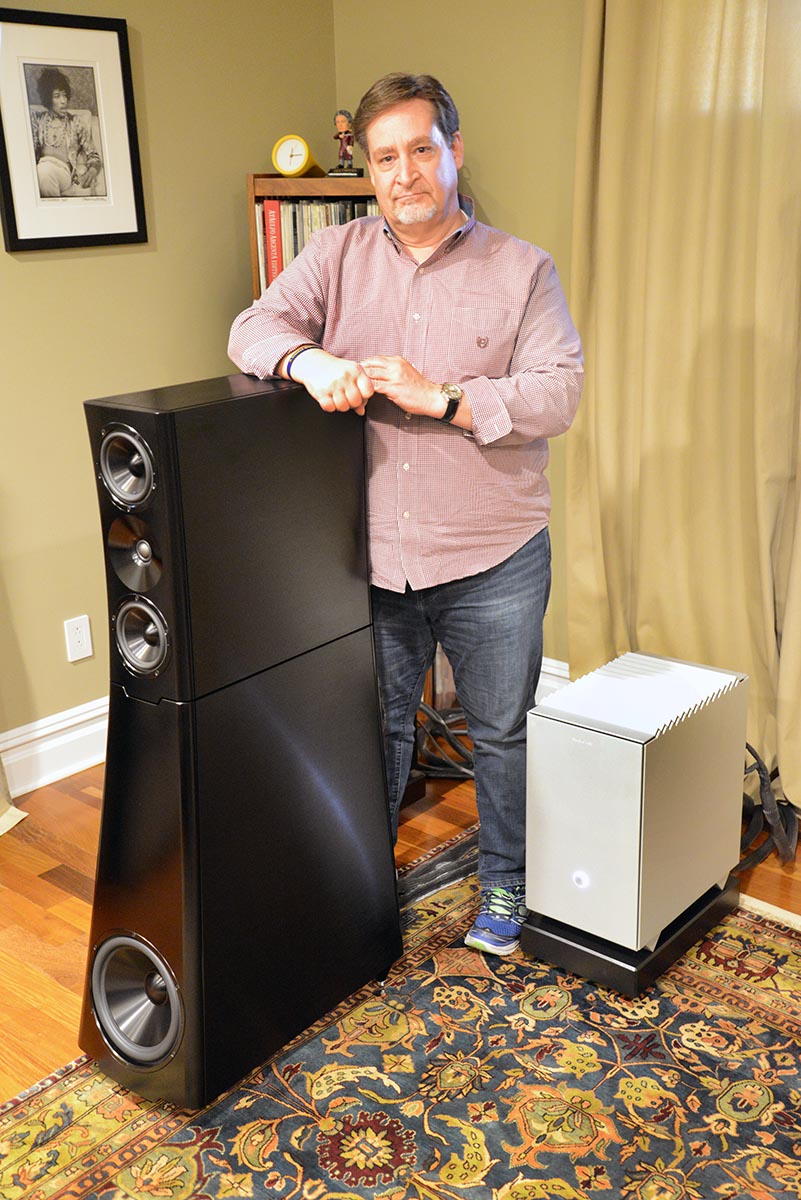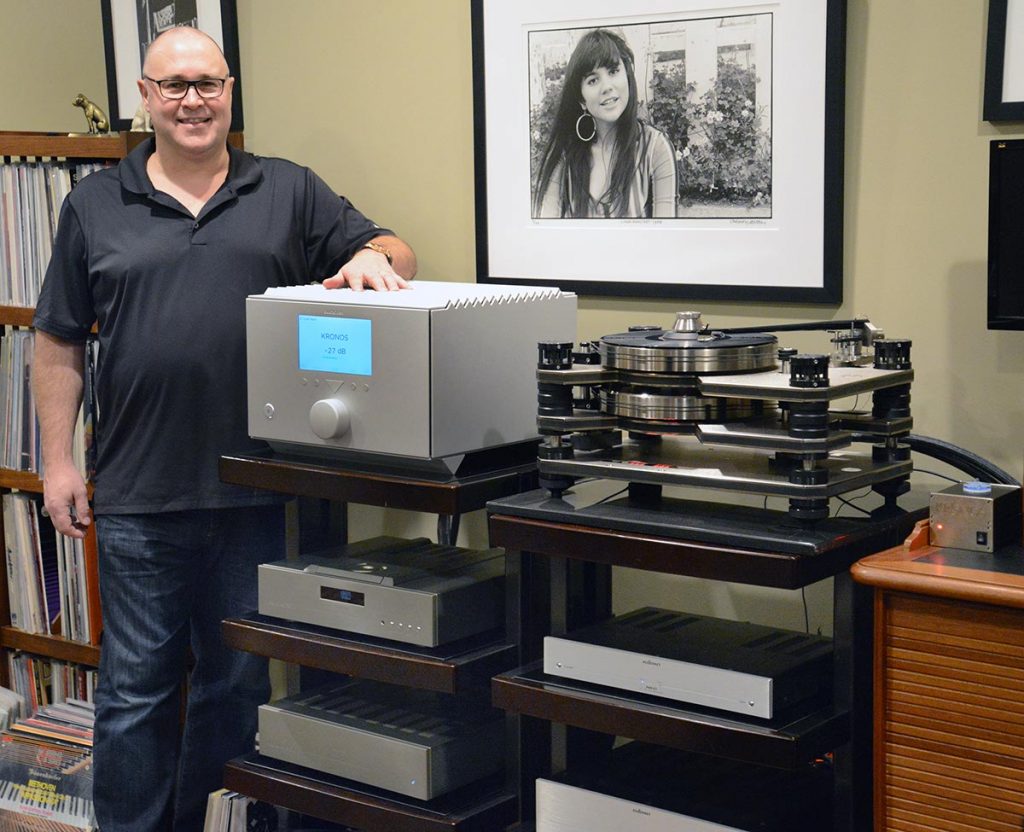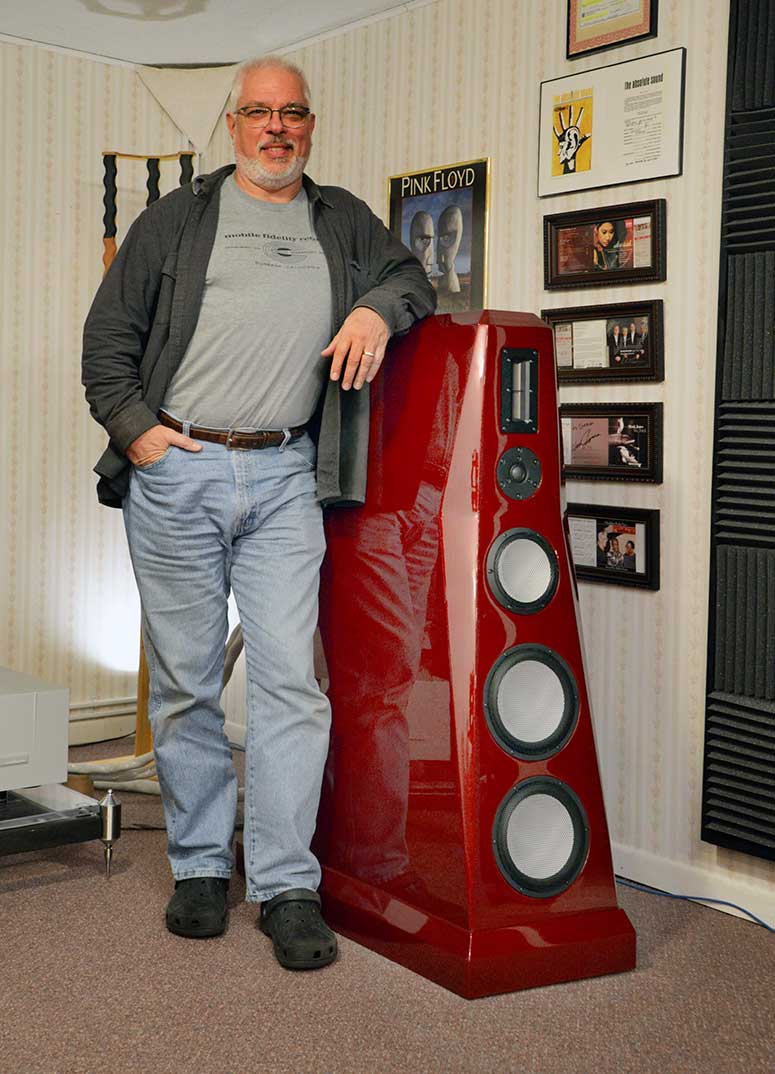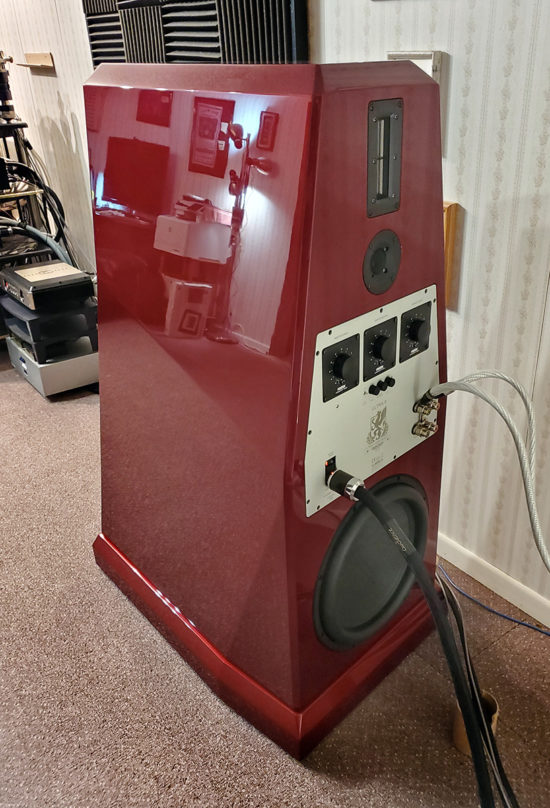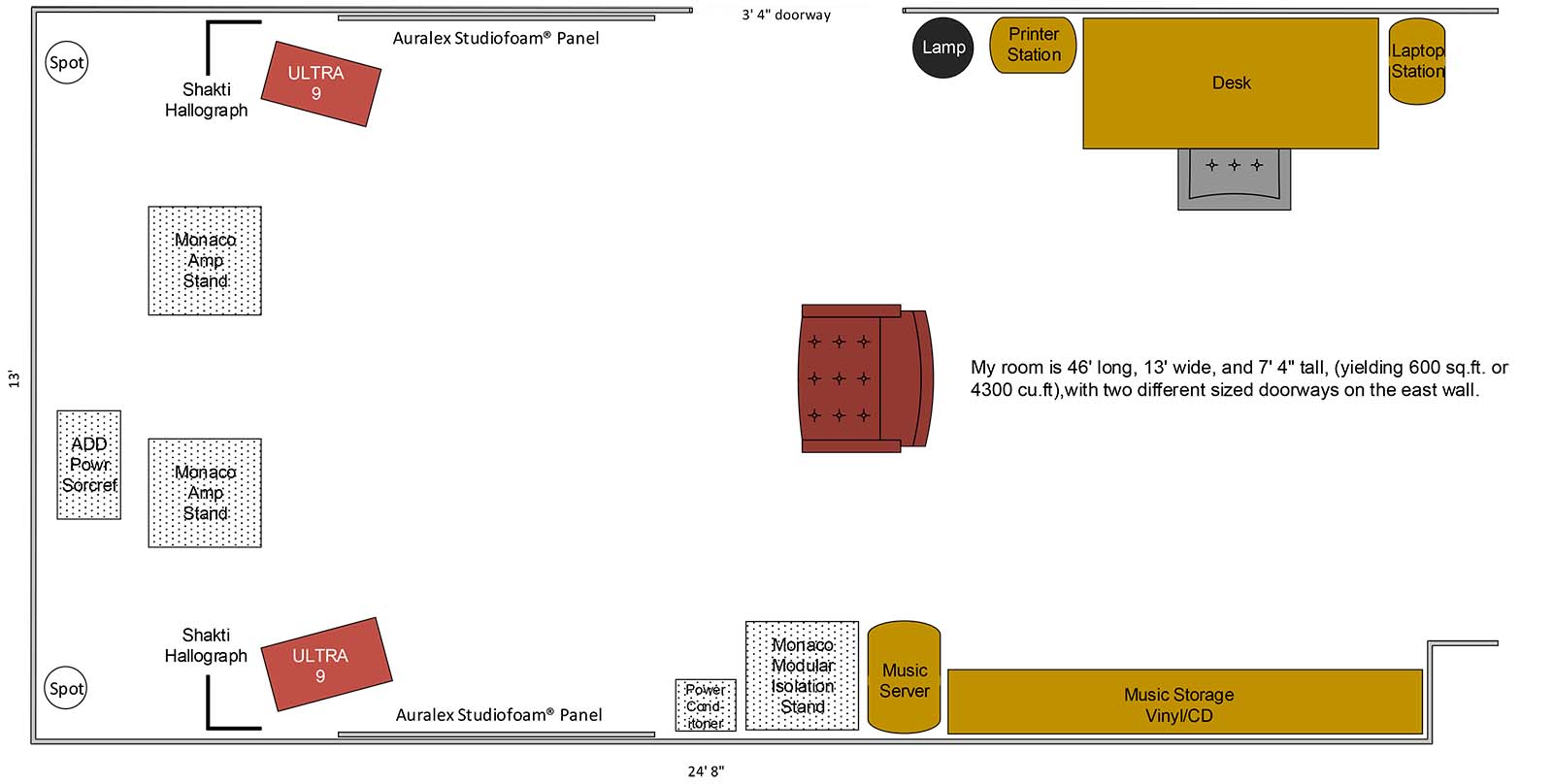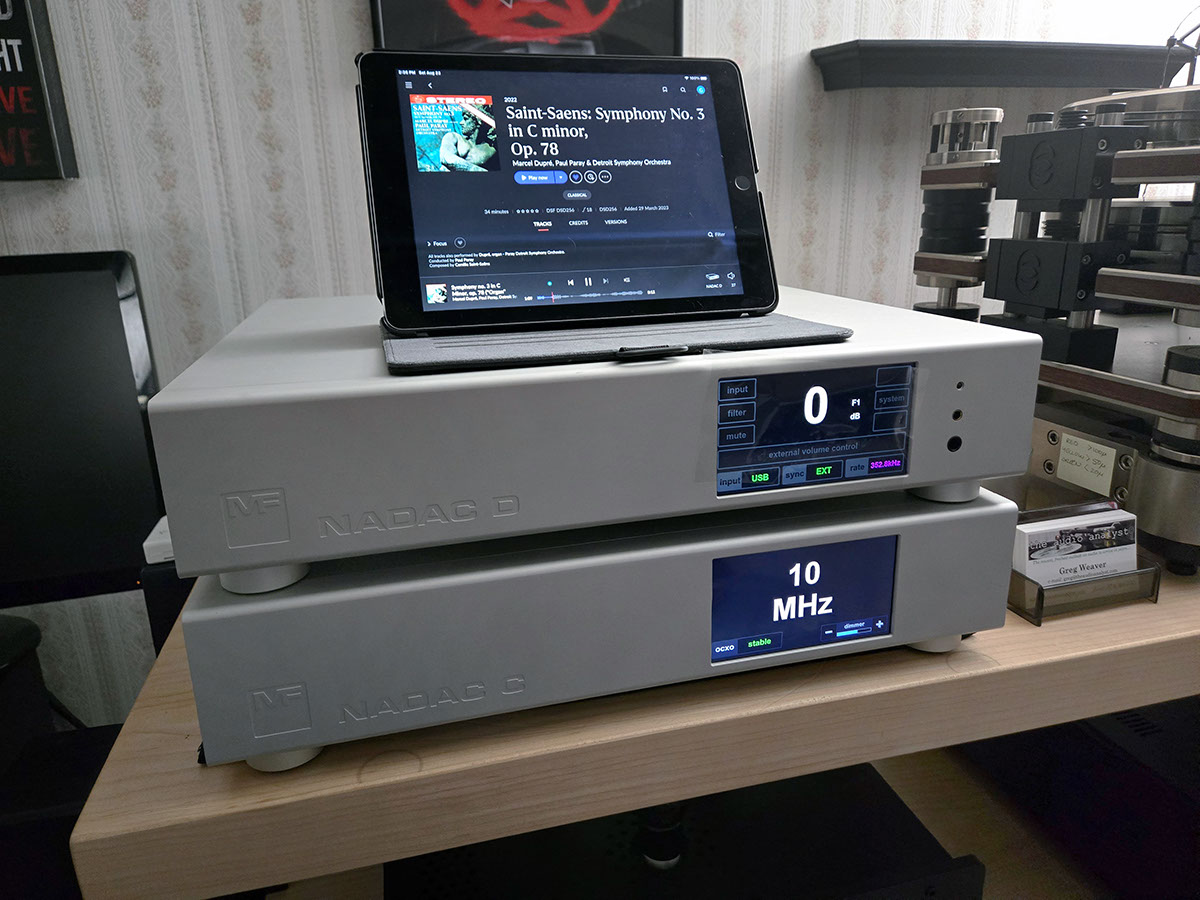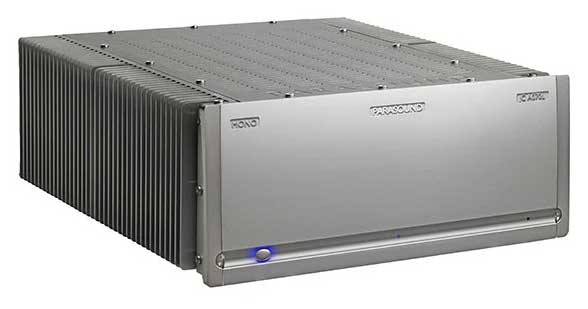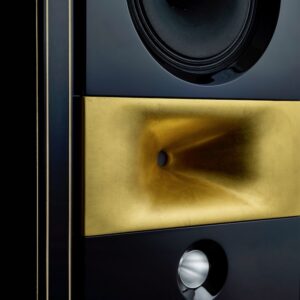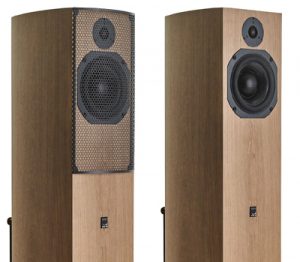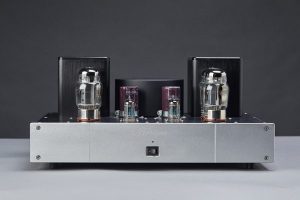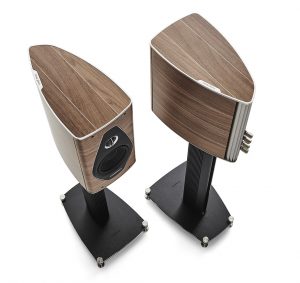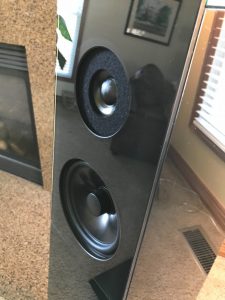Thursday morning, December 7th, I was treated to a private unveiling of the new YG Acoustics Sonja Series 2 loudspeaker. As a guest of Dick Diamond, YG's Director of Sales & Marketing, and Bill Parish, owner of GTT Audio & Video, in Long Valley, NJ, I was granted the privilege of spending the entire day listening to the newly introduced Sonja 2.2.
The Sonja 2.2 is comprised of a new 2.1 module, some 20" tall, 8" wide, and 21" deep, sporting two 6" YG Billet-Core™ mid-woofers, one each directly above and below the new 1" YG BilletDome™ tweeter, fitted into a wave guide having the same dimensions as the mid-woofer drivers. That unit then sits atop the Bass Module, at 31" tall, 8' wide, and 21" deep at the top, to mate with the 2.1 module, but flaring to 13" wide and 25" deep at the bottom, to accommodate one 10.25" YG BilletCore™ woofer, located towards the front bottom of that module for floor coupling.
A quick glance the 2.2 might allow it to be mistaken for the Sonja 1.2, but a closer look at the tweeter and the back panel make it clear this is the new and markedly improved 2.2. The back panel now has a much cleaner look, with the YG built bi-wiring binding posts much more cleanly appointed near the top of the bass module and the bottom of the 2.1 module.
What differentiates a 2.2 from its predecessor is the inclusion of two technologies first developed for, and prior to the Sonja 2 Series release, available only in the Sonja XV, Yoav Geva's $265,900 per pair statement loudspeaker project, introduced in September of 2016. Those two technologies are the new BilletDome™ tweeter and ViseCoil™ inductors.
The BilletDome™ AirFrame, and the block of aluminum it starts off as
Tweeters must handle extreme acceleration that alternates thousands of times a second, generating something on the order of 1000 G. By way of comparison, fighter pilots must be conditioned to handle up to 9 G, less than one one-hundredth that of what a tweeter must endure. YG needed to build a tweeter that did not suffer natural roll-off above 20kHz like soft domes, and yet would be free of the ringing and resonances common to all metallic-based dome tweeters above their upper-frequency limit. After considerable thought and effort, the solution was found by combining a stiff, light, airframe machined from a single aluminum billet, covered by, and supporting, a resonance-free soft dome material.
Weighing just 30 milligrams (about one one-thousandth of an ounce), the unique airframe supports critical sections up to 14 times thicker than the typical hard dome, and YG says it represents the most complex mechanical invention they have developed to date. The frame tolerances are so close that, at this stage, only about 60% of production can pass the final QA inspection. Those frames that pass inspection are then sent to their partner Scan-Speak, who, with one of their unique adhesives, mate it to the silk dome before it is sent back to YG in Arvada, CO, immediately northwest of Denver, for final assembly and motor modification. For more info, YG has posted a video about the new tweeter technology.
A close up of the BilletDome™ tweeter in its mid-bass driver matching wave guide
The second technology employed are YG Acoustic ViceCoil™ inductors in the woofer network. These inductors are CNC-wound in-house, then encased in a vise-like milled structure to greatly minimize vibration and tighten tolerances. YG measurements suggest residual loss is reduced by nearly 25%, and that linearity is improved by something on the order of 60%. Dick Diamond shared an in-house “Torture Test" video with me, where they compared one of the finest commercial inductors available to speaker manufacturers today to one of these ViseCoils™ by plugging each directly into the wall! Yes, that's right, into a 120V AC wall socket, which, in that test case, equated to something like 540 watts at 60Hz! The difference in audible ringing and physical vibration was not subtle; the ViseCoil™ was markedly superior.
Bill had assembled an exceptionally transparent and articulate system in GTT's office, a room some 23" x 16.5" x 9", with listeners sitting in a nearfield position. This room had been chosen as it is a more realistic approximation of a room into which the Sonja 2.2 would likely be installed, rather than the cavernous 20' x 35' x 11' primary listening room where the Sonja XV's had been auditioned.
The driver complement of the Sonja 2.1 module
Sources were the Kronos Pro Limited Edition turntable, with its Black Beauty tonearm, and an Air Tight Opus 1 cartridge, feeding an Audionet PAM G2 phonostage for analog, while an Audionet Planck CD player (with AMPERE power supply) provided ones and zeros. Electronics were from the new benchmark-setting Audionet Scientist Series, the Audionet Stern linestage and a pair of Audionet Heisenberg mono amps. All cabling was Kubala-Sosna Elation! Series.
From the first needle drop, it was apparent that Sonja 2.2 enjoyed meaningfully heightened levels of transparency and resolution, as well as greater microdynamic shading, than its progenitor. Much as with the sound of the 1.2, the overall presentation was strikingly fluid sounding, with remarkably expressive dynamic events. But the superior sense of transparency to the source and the intimacy of the performances were notably more apparent over the entire audition.
YG Acoustics Director of Sales & Marketing, Dick Diamond, standing between the Sonja 2.2 and an Audionet Heisenberg monoblock amplifier
Playing the recent Santana Abraxas reissue [Mobile Fidelity UD1S], the BilletDome™ really came on strong. The chimes throughout the opening of “Singing Winds, Crying Beasts" and the assertive intelligibility of individual bass fingering, as well as the decay of trailing cymbals on “Black Magic Woman" had me convinced I was listening to a much improved Sonja speaker.
All of the percussion on this 1970 Afro-Caribbean, blues/rock masterpiece—maracas, timbales, congas, bongos, etc.—were stably placed and precisely sized and located, with no wander or bloat, and each separate strike or hand fall, whether it be by fingers, the heel of the palm, or even the meaty, fleshy part of the thumb side of the palm, was established with unique individuality.
GTT principal Bill Parish standing beside the Audionet Stern linestage
Moving to Falla's The Three-Cornered Hat [London], and I was immediately transported back to the venue. The hall's space and size were revealed nearly effortlessly; indeed, they were almost forced upon you, so apparently were they reproduced. Instruments were so naturally rendered, again with an inescapable ease and articulated clarity, with seeming boundless space, effortless air, and irrefutable body and bloom. Timbre was rich, full, and exquisitely textured.
Overall, their macrodynamic expressiveness was alarmingly good, as was their ability to portray the individuality, power, and impact of rhythmic lines, yet they integrated the entire fabric of a composition with an inescapable coherency and continuousness.
A shot of the front of the room, showing the scale of the set up
In general, utilizing the superb new BilletDome™ tweeter, and employing the ViseCoil™ inductors in the crossovers, has moved the new Sonja 2.2 to the head of the class, and has increased the retail price by only $4,000, to $76,800. While clearly still pricey, it is a stirringly revitalized loudspeaker, with newfound transparency and resolution, and a patently enhanced ability to render microdynamic shading and involvement. To my ears, the advances made more than justify the roughly 6% increase in price.
Honestly, with notable exceptions in attributes like scaling and dynamics, the Sonja 2.2's soundscape is very reminiscent of the sonic tapestry woven by the YG flagship XV. YG has yet another winner on their hands…
US Distributor
Bill Parish, GTT Audio
908.850.3092




